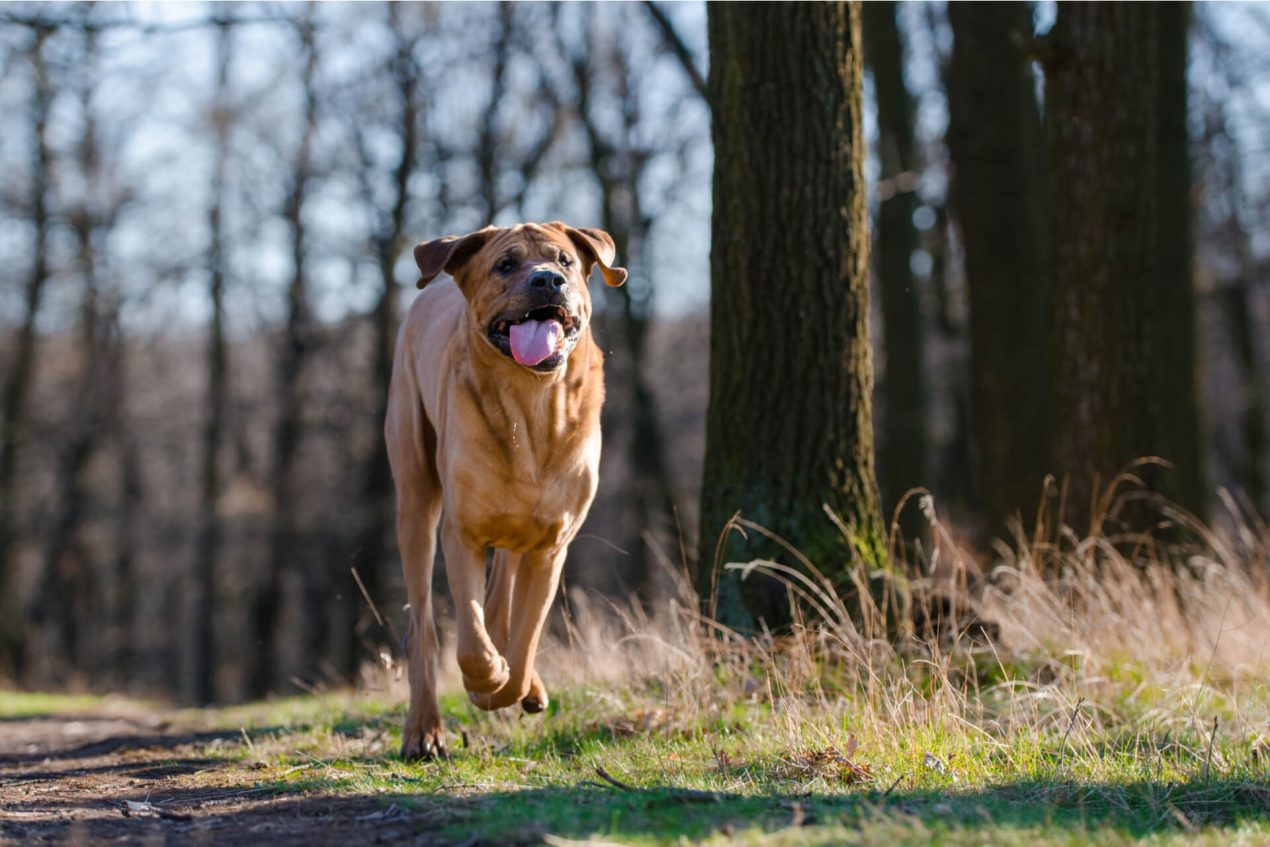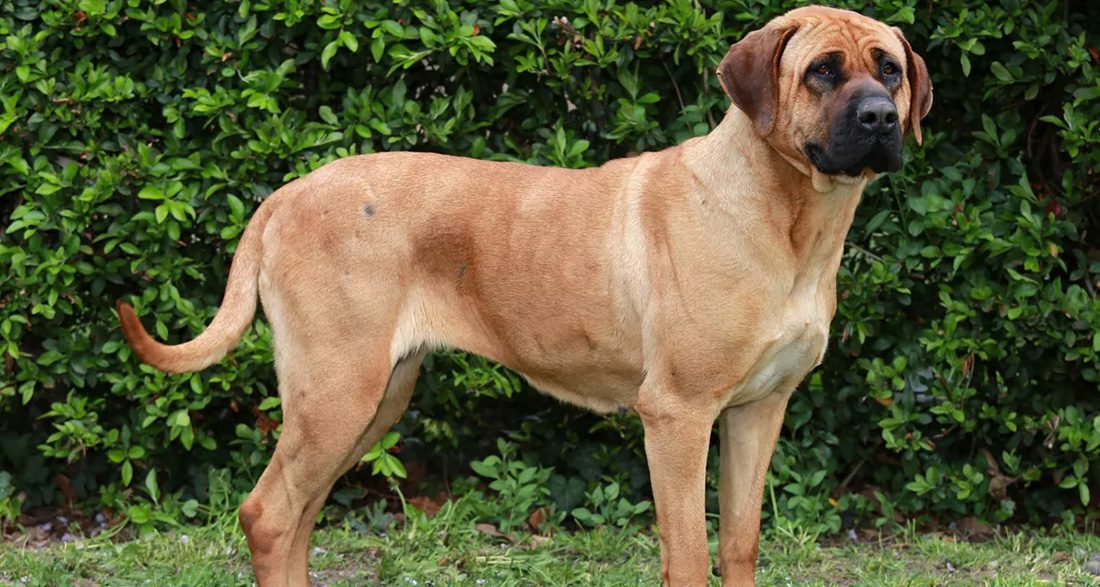The Tosa Inu is one of Japan’s largest dog breeds, known for its protective instincts and gentle nature, making it a loyal companion. Learn more about the history, character, care, and maintenance of the Tosa Inu in the profile.
History of the Tosa Inu
The Tosa Inu’s history traces back to the 19th century and is closely tied to modern Japanese history. During a time of significant societal upheaval and the opening of Japan to European influences, the weaknesses of local breeds became apparent to the Japanese elite. The dogs brought by Europeans, such as German Boxers, Mastiffs, and the Japanese ShikokuKen, highlighted these deficiencies.
As a response, the breeding of a larger dog, the Tosa Inu, commenced. This breed was developed for herding and traditional Japanese dog fights, resembling sumo wrestling matches. These fights were ritualized competitions where the physically stronger dog won by forcing the opponent to the ground. Aggressive biting or aggression display was not allowed.
Breed Overview
GROUP: Working
HEIGHT: 21.5 to 23.5 inches
WEIGHT: 100 to 200 pounds
TEMPERAMENT: Intelligent, courageous, alert, fearless, protective, calm
COAT: Short, hard, and dense
COAT COLOR: Red, fawn, apricot, black, or brindle
HYPOALLERGENIC: No
LIFE SPAN: 10 to 12 years
Appearance
The Tosa Inu is a large Molosser dog, impressing with its athletic and robust build while exuding an elegant aura. Despite its imposing size, the breed has a calm, almost cool demeanor, making it an intriguing companion. The Tosa Inu is characterized by its drooping ears and a thick tail that tapers towards the tip.
Coat Color and Pattern:
The giant’s coat is short, hard, and bristly, requiring occasional brushing. The coat comes in various colors, including red, black, brindle, or fawn. Some individuals may have discreet white markings on the paws and chest, a common trait in European breeding.
Nature and Character
How dangerous is a Tosa Inu? Despite its massive presence and well-defined protective instincts, the Tosa Inu is a loyal, affectionate, and almost tender companion to its owner and family. However, it’s essential to recognize that this substantial dog is not necessarily a family pet. While this dog breed can get along with children, early training is crucial. Despite its loving nature, the giant is an excellent companion and guard dog. It may not require another dog of a different breed as a companion, as it is not necessarily a loner. However, proper care and training are crucial, as failures in education can bring out the Japanese fighting dog in the Tosa Inu, leading to outright bans in some countries.
| Affection Level | Medium |
| Friendliness | Low |
| Kid-Friendly | Medium |
| Pet-Friendly | Low |
| Exercise Needs | Medium |
| Playfulness | Low |
| Energy Level | Medium |
| Trainability | Medium |
| Intelligence | Medium |
| Tendency to Bark | Low |
| Amount of Shedding | Low |
Acquiring
A Tosa Inu puppy should only be obtained directly from a breeder with a pedigree. Only a purebred dog can develop the promised characteristics, as mixed-breed animals tend to display more aggressive behavior. Adopting a Tosa Inu from a shelter is only advisable for experienced owners, as these dogs form strong bonds with their owners and may not easily adapt to frequent changes. Acquiring a Tosa Inu is not a decision to be taken lightly, and it is recommended to consult with an experienced Tosa Inu breeder before making the purchase.

What to Consider When Buying a Tosa Inu?
How much does a Tosa Inu cost?
Generally, expect to pay between $1000 and $1500 for a Tosa Inu puppy. However, the purchase should only be made through a certified breeder. The dog’s pedigree should be complete, and a permit for keeping the dog should be available. As Tosa Inus are classified as restricted breeds in many states and nations, keeping and importing them can be considered a crime or at least a violation.
Why is the Tosa Inu a restricted breed?
Due to its historical use as a fighting dog in many countries, keeping this giant breed is prohibited in several nations. But where is the Tosa Inu banned? In countries like Denmark, the Swiss canton of Wallis, and Ireland, both breeding and importing the dog are strictly forbidden.
What about the United States? Is the Tosa Inu a restricted breed?
Thankfully the Tosa Inu is not banned in the USA!
Puppy Development and Training
The Tosa Inu is a muscular animal requiring strong and sensitive guidance from birth. Experienced handlers should be capable of presenting their dominance, which the dog will accept. If purebred, the Tosa Inu generally fits into the regular pack structure and acknowledges the owner’s dominant leadership.
Violence should be avoided in training, but early-stage dog training can be beneficial. Once learned, behaviors, especially in territorial protection, are not easily forgotten by the Tosa Inu and are consistently ready to be applied. This very intelligent animal can learn many things but must be properly guided.
How to Keep a Tosa Inu?
The large dog needs a lot of space. A garden is almost essential, alternatively, a very large apartment with at least 100 m². Sufficient exercise is self-evident and indispensable if you want to control the energy bursts of a young animal. The young one should be able to have direct contact with peers in a timely manner. This ensures that the dog does not become a loner, and its social skills can come to the fore. The friendly giant is ideal for dog owners with a lot of experience and self-confidence in dog training. With its strong personality, the breed can quickly overwhelm inexperienced handlers.
Activities
There is almost no sport you cannot do with the Tosa Inu. Especially running, hiking, or jogging are ideal and provide the necessary exercise for the animal. Swimming or cycling are also activities the Tosa Inu loves. Ideally, you should take the dog into nature at least once a week to let it run around. Therefore, as an owner, you should have enough free time because a short walk after work is not enough for the giant.
Even indoors, the dog wants to be entertained. You should plan at least an hour of playtime every day. Catch games or skill games can be played with the intelligent animal at any time.
Does the Tosa Inu Get Along with Other Animals?
While the Tosa Inu can be calm and affectionate towards its humans, its behavior towards other dogs can change quickly. If the big Japanese dog sees another dog as an intruder, things could get a bit louder. Otherwise, the Tosa Inu is a calm soul that also enjoys the company of other dogs.

Health and Care
Caring for the Tosa Inu is very easy. A balanced diet is the foundation, along with sufficient exercise. Regarding coat care, there is little effort, as the Tosa Inu has very short fur. However, an energy-dense diet is essential. This can prevent future joint problems, and the dog can build the necessary muscle mass effectively. The Tosa Inu is a strong and quite robust dog. However, the breed often suffers from hip dysplasia. This condition can be counteracted with the right food and a balanced diet.
Interesting Facts
The Tosa Inu is also known as the Japanese Mastiff and belongs to the Molosser class. It is still bred in Japan and is a widely used guard dog. It also finds applications in security and military settings. As a military dog, the Tosa Inu has earned an outstanding reputation worldwide.
In many cases where a Tosa Inu is brought to an animal shelter in Germany, this happens due to housing errors or overwhelmed owners. Unfortunately, these animals are often beyond saving, so it is emphasized that only experienced owners and genuine enthusiasts should consider acquiring a Tosa Inu.
Do you have a Tosa Inu or plan to get one soon? Tell me more in the comments!


